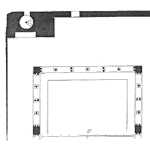
Recently Peter Stuttard asked if I knew of a reference for the perfect strength and perfect stress concepts. I didn’t and asked for a bit of explanation of the phrases.
Here is his reply (via Linkedin, btw a great tool to get and stay in touch) posted with permission with minor formatting edits.
To learn more about Peter check out his Linkedin profile.
Fred
Thanks for responding so quickly, the concepts of Perfect Strength and Perfect Stress are related to your discussion re Parts Count and Parts Stress predictions and reading this on your web site prompted me to ask you about them.
I would not claim to be a ‘true’ reliability or maintainability engineer as we (Aspîre) generally address R&M from a support engineering perspective. However we do rely quite heavily on R&M techniques in both our consulting tasks (ILS, LSA, RCM, Complex System Modelling, etc) and in the support engineering training that we provide. During our training courses I do try to make the delegates aware of the nature of the measures that we use, and some reliability engineering basics such as the impact of redundancy in term of operation reliability and basic or technical reliability. Topics such as this are good for getting people to think about the issues rather than merely rote learning.
I sometimes touch on the concepts of “Perfect Stress” and “Perfect Strength”, they are particularly good for getting the delegates thinking because they challenge conventional thinking.
The concept of Perfect Strength counters the idea (for electronic equipment) that additional complexity will reduce reliability. Whereas the concept of “Perfect Stress” counters the idea of that building in redundancy will increase reliability. Neither concept is “absolute” however.
The logic is simple, but bear in mind that I am remembering something I read a fair few years ago.
Perfect Strength
Taking Perfect Strength first, the argument is that if circuits are designed so as to be sufficiently robust to survive any predictable, reasonable, stresses applied to them, i.e. if they are strong enough to take the stress, then it makes little difference how complex the overall system is, it will withstand all normal stresses applied to it. A simple analogy is to consider a structural system instead of electronics, e.g. a bridge, no one would consider that the likelihood of a road failing would increase if we diverted it over two bridges rather than one, because each bridge is designed to take a full load of traffic. This logic counts against the use of the Part Count and Parts stress methods of course.
Perfect Stress
The Perfect Stress argument takes more or less the opposite view, i.e. if a stress of such magnitude is applied to system that it will damage or destroy it, having a redundant system (subject to the same stress) will deliver no benefit whatsoever, because it too will be damaged or destroyed. (This presumes that there is no effective ‘load sharing’). A simple example, was an experience I had many years ago, back in the days of the fax modem. A nearby lightning strike had destroyed the fax modem, I thought I was OK because I had a multifunction printer, with a built in fax function that I could use instead. However, the lightning strike had destroyed that as well of course.
Summary
These simple examples are extreme cases, but the concept must apply at lower levels, for examples a dirty electrical power supply could degrade both a primary system and an active redundant system equally if they were not properly protected. On the contrary, the same dirty power supply would have no effect, no matter how many components were in the system, if that system was designed so as to be able to withstand power fluctuations and spikes.
I hope this makes sense, you may of course be well aware of these concepts, but using different terminology.
PS No joy with Google Scholar… [ed. I had suggested searching for a reference using Google Scholar]
Regards
Peter
So, what do you think? Have you heard of these concepts? Do you know of a reference that discusses these concepts? Drop a comment here or get in touch with Peter and let him know your thoughts.
Leave a Reply